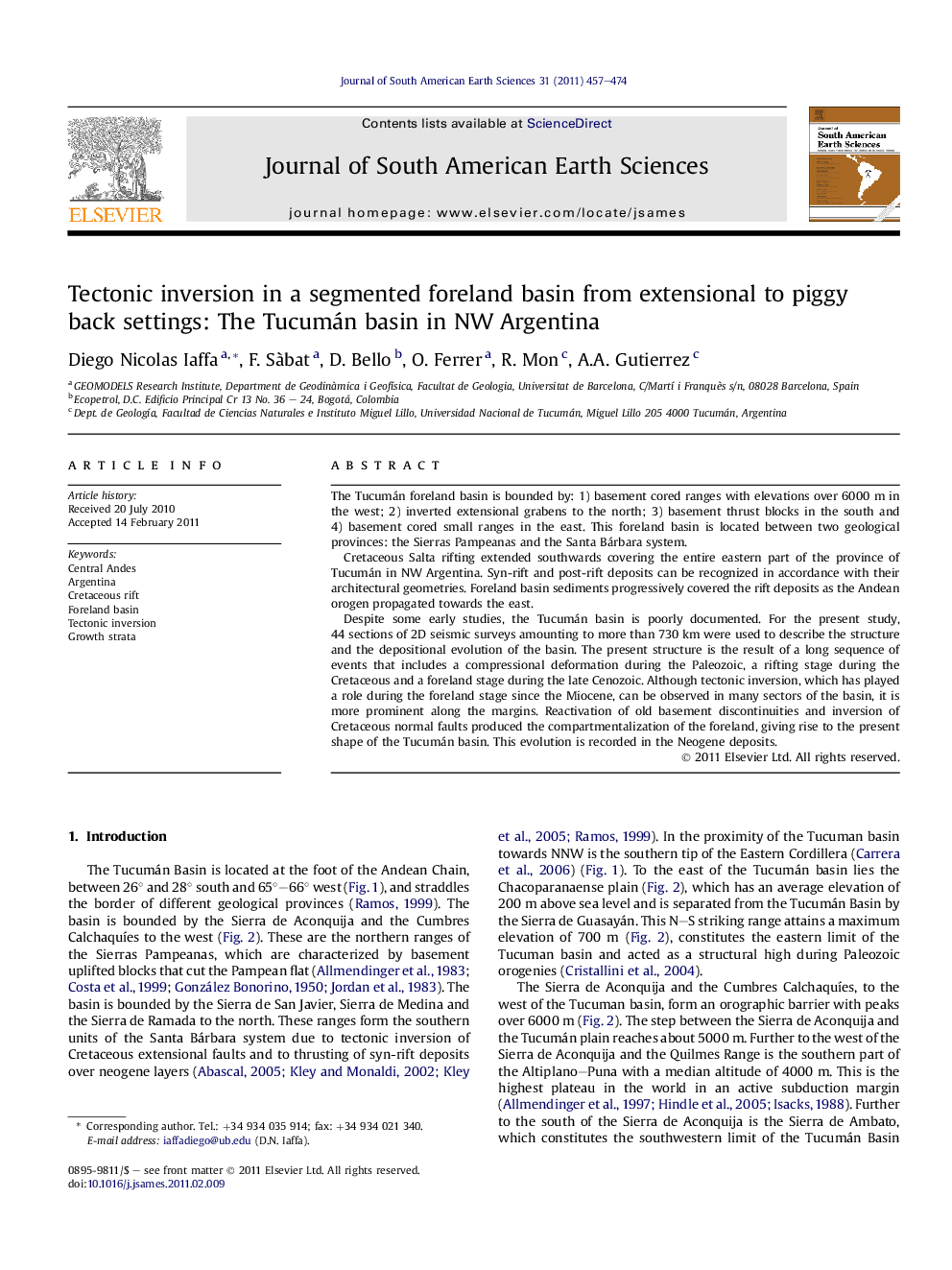| Article ID | Journal | Published Year | Pages | File Type |
|---|---|---|---|---|
| 4682636 | Journal of South American Earth Sciences | 2011 | 18 Pages |
The Tucumán foreland basin is bounded by: 1) basement cored ranges with elevations over 6000 m in the west; 2) inverted extensional grabens to the north; 3) basement thrust blocks in the south and 4) basement cored small ranges in the east. This foreland basin is located between two geological provinces: the Sierras Pampeanas and the Santa Bárbara system.Cretaceous Salta rifting extended southwards covering the entire eastern part of the province of Tucumán in NW Argentina. Syn-rift and post-rift deposits can be recognized in accordance with their architectural geometries. Foreland basin sediments progressively covered the rift deposits as the Andean orogen propagated towards the east.Despite some early studies, the Tucumán basin is poorly documented. For the present study, 44 sections of 2D seismic surveys amounting to more than 730 km were used to describe the structure and the depositional evolution of the basin. The present structure is the result of a long sequence of events that includes a compressional deformation during the Paleozoic, a rifting stage during the Cretaceous and a foreland stage during the late Cenozoic. Although tectonic inversion, which has played a role during the foreland stage since the Miocene, can be observed in many sectors of the basin, it is more prominent along the margins. Reactivation of old basement discontinuities and inversion of Cretaceous normal faults produced the compartmentalization of the foreland, giving rise to the present shape of the Tucumán basin. This evolution is recorded in the Neogene deposits.
